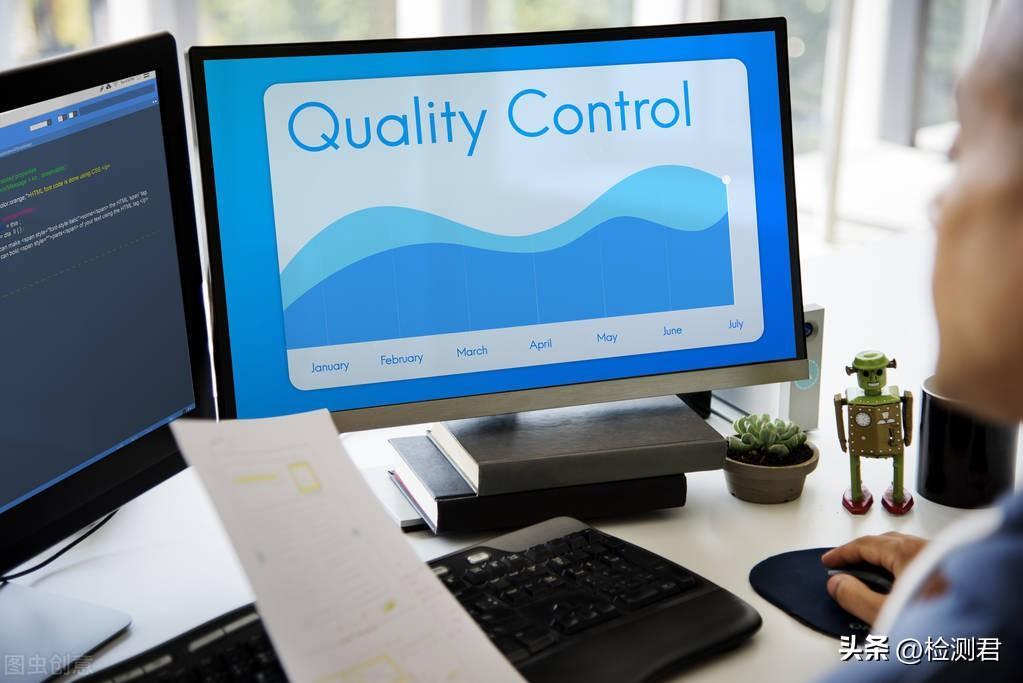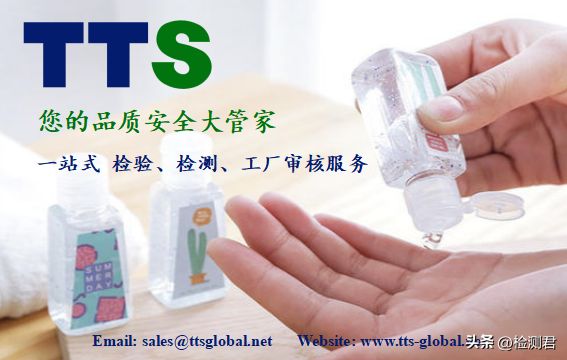1. The product quality inspection report has
It is a document reflecting test results and conclusions. It provides information on the results obtained by testing agencies on products commissioned by customers. It may be one page or several hundred pages long.
The test report shall be in accordance with the requirements of Articles 5.8.2 and 5.8.3 of the “Laboratory Qualification Assessment Guidelines” (for accredited laboratories) and ISO/IEC17025 “Criteria for the Accreditation of Testing and Calibration Laboratories” Articles 5.10.2 and 5.10. 5.10.3 Requirements (for laboratories accredited by CNAS) shall be compiled.
2 What information should the test report contain?
The general test report should contain the following information:
1) Title (such as test report, test report, inspection certificate, product inspection certificate, etc.), serial number, authorization logo (CNAS/CMA/CAL, etc.) and serial number;
2) The name and address of the laboratory, the location where the test is carried out (if different from the laboratory’s address); if necessary, give the laboratory’s telephone, e-mail, website, etc.;
3) The unique identification of the test report (such as the report number) and the identification on each page (report number + page # of # pages) to ensure that the page is part of the test report, and to indicate the end of the test report clear identification;
4) The name and address of the client (the entrusting party, the inspected party);
5) Identification of the method used (including the basis for sampling, inspection and judgment) (standard number and name);
6) The description, status (new and old of the product, production date, etc.) and clear identification (number) of the inspection items;
7) The date of receipt of the test items and the date on which the test was carried out, which are critical to the validity and application of the results;
8) a description of the sampling plan and procedures used by the laboratory or other institution, as relevant to the validity or application of the results;
9) Test results, where applicable, with units of measurement;
10) The name, title, signature or equivalent identification of the person who approves the test report;
11) When relevant, a statement that the result relates only to the item being tested. Necessary explanations, such as including additional information requested by the client, further explanations on the inspection situation, methods or conclusions (including what has been deleted from the original scope of work), etc.;
12) If part of the inspection work is subcontracted, the results of this part should be clearly identified;
13) Accessories, including: schematic diagram, circuit diagram, curve, photo, list of testing equipment, etc.
3.Classification of test reports
The nature of the inspection report generally reflects the purpose of the inspection, that is, why the inspection was carried out. Common inspection properties include entrusted inspection, supervisory inspection, certification inspection, production license inspection, etc. Entrusted inspection is generally carried out by the entrusting party in order to judge the product quality; supervision and inspection are generally arranged by government administrative agencies to monitor product quality. And implemented; certification inspection and license inspection are generally inspections performed by the applicant to obtain a certificate.
4. What information should the sampling test report contain?
The sampling test report shall contain information on the sampling unit, the sampling person, the batch represented by the sample, the sampling method (random), the sampling amount, and the situation of sealing the sample.
The test report should give the name, model, specification, trademark and other information of the sample, and if necessary, the manufacturer and production (processing) name and address.
5. How to understand the information of the inspection basis in the inspection report?
A complete test report should give the sampling standards, test method standards, and result judgment standards on which the tests in this report are based. These standards may be concentrated in one product standard, or they may be separate standards from the above types.
6. What are the inspection items for conventional products?
General product inspection items include appearance, logo, product performance, and safety performance. If necessary, the environmental adaptability, durability (or life test) and reliability of the product should also be included.
Generally speaking, all inspections are carried out in accordance with the specified standards. The corresponding technical indicators and requirements are generally stipulated for each parameter in the standards on which the inspections are based. These indicators are generally only available under certain testing conditions, for the same product under different test conditions, different results may be obtained, and the complete test report should give the judgment indicators for each performance and the corresponding test methods. The detection conditions for completing related projects generally include: temperature, humidity, environmental noise, electromagnetic field strength, test voltage or current, and equipment operating gear (such as stretching speed) that affect project parameters.
7.How to understand the information in the test results and conclusions and their meanings?
The test report should give the test results of the test parameters completed by the laboratory. Generally, the test results are composed of the test parameters (name), the unit of measurement used for the test parameters, the test methods and test conditions, the test data and results of the samples, etc. Sometimes the laboratory also gives the data corresponding to the test parameters and single-item qualification judgments according to the requirements of the entrusting customers. to facilitate the use of the report.
For some tests, the laboratory needs to make the conclusion of this test. How to express the test conclusion is a matter of extreme caution for the laboratory. In order to accurately and objectively express the test conclusion, the test report conclusions given by the laboratory can be expressed in a variety of ways. The inspection conclusions include: product qualified, product spot check qualified, inspected items qualified, conforming to standards, etc. The user of the report must correctly understand the different meanings of these conclusions, otherwise the inspection report may be misused. For example, if the inspected items are qualified, it only means that the inspected items in the report meet the standard requirements, but it does not mean that the whole product is qualified, because some items have not been inspected completely, so it is impossible to judge whether they are qualified or not.
8.Is there a time limit for the validity period of the “Product Quality Inspection Report”?
Product quality inspection reports generally do not have an expiration date. However, the user of the report can judge whether the report obtained can still be accepted and referenced according to the information such as the shelf life and service life of the product. The supervision and random inspection of the quality supervision department is generally arranged once a year. Therefore, it is best not to accept the supervision and inspection report that exceeds one year. For general entrusted test reports, there are signs or instructions on the report: “Only responsible for the samples”, therefore, the reliability of such test reports should be relatively lower and the time should be shorter.
9.How to verify the authenticity of the product quality inspection report?
The verification of the product quality inspection report should be inquired by the inspection agency that issued the report. At present, general large-scale inspection agencies have established websites, and provide query information to netizens on the website. However, because the inspection agency has the responsibility to keep the product quality information of the inspected enterprise confidential, the information generally provided on the website is limited.
10. How to identify the mark on the product quality inspection report?
CNAS (Laboratory National Accreditation Mark) can be used by laboratories accredited by the China National Accreditation Service for Conformity Assessment in accordance with CNAS accreditation rules and guidelines; CMA (Laboratory Qualification Accreditation Metrology Accreditation Mark) in accordance with laboratory accreditation (measurement certification) guidelines Laboratories that have passed the accreditation review can be used (measurement law requires: all inspection agencies that issue fair data to the society must pass the measurement certification, so the test report with this logo should be used as a confirmatory test);
In addition, each inspection agency also uses its own identification symbol on the report, especially foreign inspection agencies have their own identification.
11. How long does it take from applying for inspection to obtaining the inspection report?
The completion time of inspection work and report is determined by the number of inspection parameters determined by the technical standards on which the product is inspected and the inspection time of each parameter. Generally, it is the sum of the time required to complete all inspection parameters, plus the preparation and issuance of inspection reports. time, the sum of these two times is the inspection time. Therefore, when different products and the same product are inspected for different items, the general inspection time is different. Some product inspections only take 1-2 days to complete, while some product inspections take a month or even several months (if there are long-term inspection parameter items such as life test, aging test, reliability test, etc.). (Editor: Routine testing items are about 5-10 working days.)
12.What are the main factors affecting the quality of product quality inspection reports?
This problem is a relatively large one, and it is difficult to explain it in a few simple sentences. From the perspective of inspection agencies, our laboratory management is based on various factors that control the quality of inspection reports. These factors are carried out through various inspection links (business acceptance, sampling, sample preparation, inspection, recording and data calculation, and inspection results reporting). It is generally considered that these factors include: personnel, facilities and environmental conditions, equipment, traceability of quantities, testing methods, sampling and management of testing samples, control of testing records and reports, etc.
Post time: Aug-30-2022







